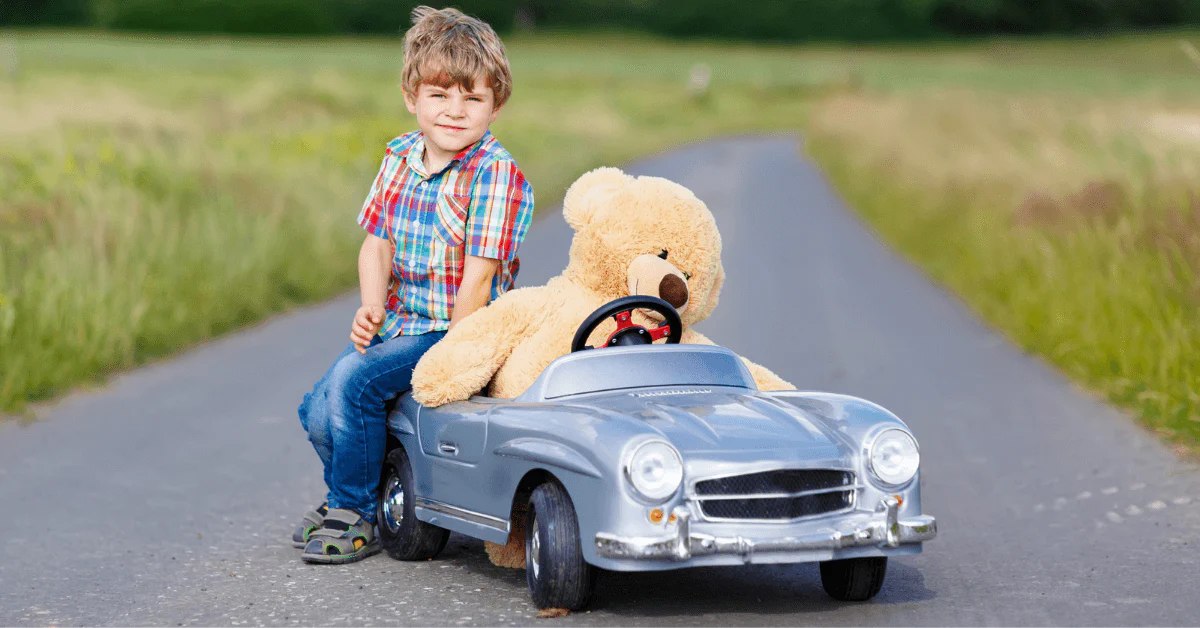The introduction of Ride On Cars into a child’s world is more than just another playtime activity; it is an invitation to explore independence, imagination, and motor skills. As a significant stride in developmental toys, ride-on cars have grown in popularity and sophistication, offering kids and parents an exciting way to engage in hands-on learning and fun.
The Attraction of Ride-On Cars for Children
Children are naturally drawn to the idea of emulating adult behaviour, and driving is an aspect of adult life that captures their attention. The prospect of controlling their own vehicle, even in a play setting, is a powerful allure for young minds. It not only serves as a stepping stone into the world of pretend play, which is critical for cognitive development, but it also provides them with a sense of mastery and autonomy.
Enhancing Motor Skills and Coordination
Ride-on cars are not just about the thrill of the ride; they are also exceptional tools for developing hand-eye coordination and fine motor skills. Steering a ride-on car requires concentration and the synchronisation of multiple movements, which can help in laying the groundwork for more complex skills in the future. The physical act of propelling the vehicle forward, either by foot-to-floor power, pedalling, or via an electric motor, further strengthens muscles and enhances overall physical coordination.
Types of Ride-On Cars and Their Benefits
There is a diverse range of ride-on vehicles available, from self-propelled to pedal-powered to battery-operated. Among these, kids’ electric bikes stand out as a popular choice. These battery-operated bikes give children the excitement of speed combined with the comfort of stability, making them especially appealing for young adventurers.
For children who are not quite ready for motorised vehicles, balance bikes provide an excellent alternative. These two-wheeled bikes do not come with pedals; instead, they encourage children to develop their balancing skills as they glide, supported by nothing but their own feet. This can be an advantageous step before transitioning to pedal bikes, as it focuses on the fundamental skill of balance.
The Social Aspect of Ride-On Cars
Ride-on cars also foster social development. Children enjoy showing off their ride-on vehicles to friends, and this leads to social interactions that are integral to their emotional growth. Sharing, taking turns, and cooperative play are all encouraged when children gather together with their ride-on cars, promoting healthy interpersonal skills.
Safety Considerations
As with any children’s toy, safety is paramount when it comes to ride-on cars. Parents should opt for age-appropriate models and ensure that they come with safety features such as non-slip tyres and stable designs to minimise the risk of tipping over. Furthermore, supervising play time and teaching children about safe driving habits from an early age will set a foundation for responsible behaviour as future road users.
Ride-On Cars and Education
Ride-on cars can also be educational in discreet ways. They can introduce basic concepts of traffic and road safety, help children learn to navigate and interpret space, as well as provide them with a better understanding of cause and effect as they operate their ride-on vehicle. This learning through play is a fundamental part of child-led and experiential learning, highly valued for its natural and effective approach.
Choosing the Right Ride-On Car
Selecting the right ride-on vehicle involves a mixture of considering the child’s age, interests, and skill level, along with the practicalities of the available space and budget constraints. While younger children might better suit foot-to-floor or pedal-propelled ride-on cars, older children might be ready for electric cars or bikes that offer a greater sense of independence.
Advantages of Electric Ride-On Cars
Electric ride-on cars present a unique blend of excitement and learning opportunities. They not only provide that ‘real driving’ experience due to their motorised nature but also require less physical effort to operate, making them suited for children who may not have the stamina or physical capacity for manual cars.
The Role of Ride-On Cars in Imagination and Role-Playing
One cannot overlook the profound impact of imagination and role-playing when it comes to children’s toys. Ride-on cars enable children to create scenarios from their own imagination, be it a race, a mission, or simply a day out doing errands. This form of play nurtures creativity, problem-solving, and empathy, as children often take on different roles in their imaginative scenarios.
Encouraging Outdoor Play
Ride-on cars are an excellent way to encourage outdoor play. Driving around in the backyard or at the park provides a welcome alternative to screen time, giving children the benefits of fresh air and a connection with nature while they play and learn.
Longevity and Adaptability
Many ride-on cars are designed to grow with the child, offering adjustable features such as removable parts or speed settings that adapt to a child’s increasing abilities and confidence. This makes ride-on cars a worthwhile investment for families, extending the toy’s usability over several years.
Conclusion: The Draw and Development Offered by Ride-On Cars
Children’s ride-on cars offer much more than mere entertainment. They serve as valuable educational tools, facilitate social interaction, and promote physical and cognitive development. With the multitude of options available, such as traditional ride-on cars, kids’ electric bikes, and balance bikes, there is something for every child to enjoy and learn from. As children engage in the joyous activity of riding these mini vehicles, they are unknowingly paving the way for a host of valuable skills that will serve them well throughout their lives.
To sum it up, ride-on cars are not merely toys; they are companions in adventure, catalysts for development, and the joyous staples of childhood.







Leave a Reply